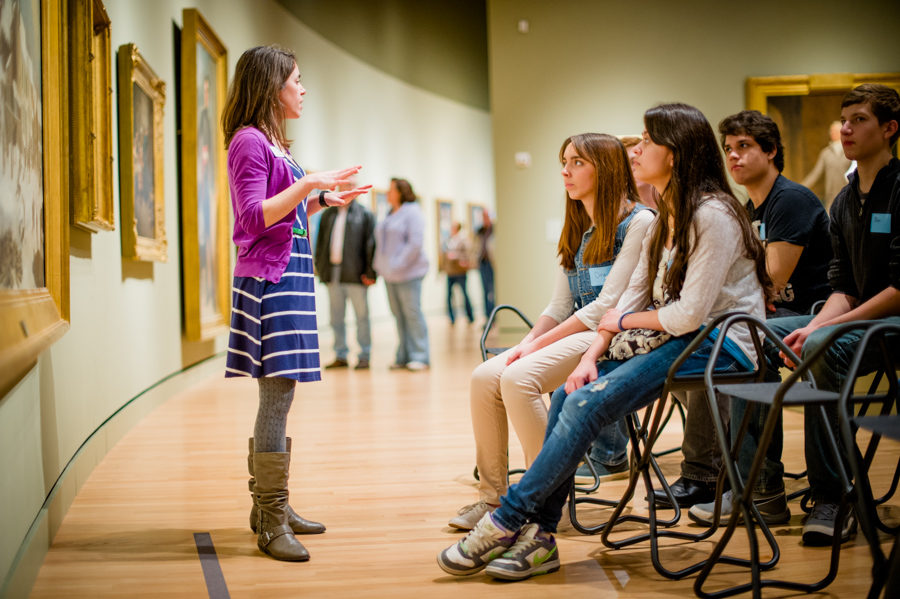Crystal Bridges’ Education Department offers art education not only for K-12 students and the public at large, but also for a variety of educators: from public and private K-12 teachers, to homeschool educators, to college instructors. Our educators specialize in pedagogical methods that are based on using works of art as teaching tools for subjects ranging from social studies to literature to science. Today’s blog post is based on a statement of Crystal Bridges’ teaching methodology that Museum Educator Amanda Driver prepared for an upcoming Open House event for homeschool educators. It provides a nice, concise look at the basic starting point for teaching from works of art: deep, guided looking. This is a fun and interesting guide that anyone can use to get them started looking at, thinking about, and discussing the artworks at Crystal Bridges. So come in and do some looking of your own soon! — LD
 Art is the stuff of life, infused with the vitality and vision of the artist and the influence of time periods, technology, cultures and other factors. Learning from works of art is an excellent way to study across disciplines as artworks demonstrate intersections within the arts, sciences, math, social studies, and literacy. Teaching from works of art can enhance student outcomes in many areas including communication, critical thinking skills, inference, visual literacy, and knowledge acquisition.
Art is the stuff of life, infused with the vitality and vision of the artist and the influence of time periods, technology, cultures and other factors. Learning from works of art is an excellent way to study across disciplines as artworks demonstrate intersections within the arts, sciences, math, social studies, and literacy. Teaching from works of art can enhance student outcomes in many areas including communication, critical thinking skills, inference, visual literacy, and knowledge acquisition.
School and Community Programs utilizes a dialogical model to teach from works of art, outlined by Rika Burnham and Elliott Kai-Kee in Teaching in the Art Museum: Interpretation as Experience. This model ensures that all interpretations are respected and everyone feels comfortable to share their ideas in a conversational format. Instead of imparting knowledge as the authoritative voice or figure, educators encourage a student-driven approach by inviting participants to share their observations, ideas and interpretations with the group. Educators weave in content and background information when appropriate to extend the conversation. They use open-ended questions to expand the discussion and allow further analysis of the work so viewers can push deeper to make meaning and connections with the artwork and with others. Group members learn from each other by sharing their background knowledge and interpretations and leave the experience feeling a sense of ownership and connection with the artwork.
As you explore the galleries, use works of art to uncover new ideas and reinforce lessons already studied. Here are some tips when looking at works of art with your children:
- Begin by looking quietly at a work of art with your children.
- After looking silently for a number of seconds, ask them to make observations by describing what they see.
- Listen and offer everyone in the group a chance to talk and share ideas.
- Ask open-ended questions, like those below and others of your choice, to continue the conversation:
o Why do you think the artist may have made this choice in the work (color, shape, etc.)? o What do you think the artist may be trying to tell or show us? o What do you feel is the mood of this artwork? o What may be the beginning, middle or end of this artwork’s story? o If you could ask the artist one question about this work, what would it be? o What do you like about this artwork? What do you dislike? Why?
- Encourage your children to use their imaginations and be respectful of everyone’s ideas.
- If you know information about the artist, artwork or time period, weave in some of the content as appropriate to extend the conversation. Be careful of sharing too much information at one time. This tends to sound like a lecture and stifles the discussion instead of promoting active engagement.
Have fun!




